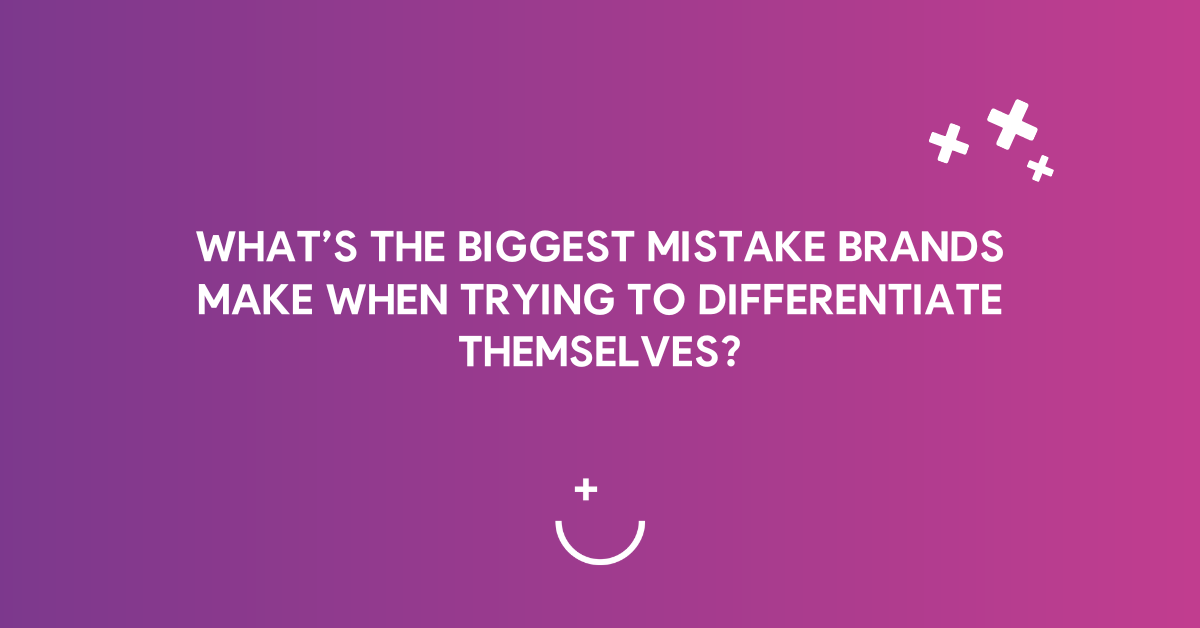Table of Contents
- The Mistake: Focusing on Features Instead of Meaningful Value
- The Differentiation Trap
- The Evidence
- When Feature-Focused Differentiation Fails
- What Actually Works?
- How to Differentiate Meaningfully
- Conclusion
- Key Sources:
Every brand wants to stand out. But many fall into the same trap: trying to be different, rather than being meaningfully different. The result? Campaigns that look flashy but don’t stick, products that feel like gimmicks, and a brand that ultimately blends in instead of standing out.
The Mistake: Focusing on Features Instead of Meaningful Value
A common pitfall is prioritising product features or surface-level differences instead of creating genuine customer value. While things like faster speeds, shinier packaging, or lower prices might seem like strong selling points, they often fail to make a lasting impact. Why? Because they don’t address what customers actually care about, their needs, emotions, and aspirations.
As Mark Ritson suggests, differentiation is not about being different; it’s about being relatively different. If your only USP is a small feature tweak, competitors will catch up quickly, and your differentiation vanishes. Real differentiation connects on a deeper level.
The Differentiation Trap
Brands often fall into what Youngme Moon calls the “differentiation trap”, pursuing gimmicks instead of real value. In her book Different: Escaping the Competitive Herd, Moon argues that true differentiation comes from making deliberate trade-offs, not just adding more features.
Take the hotel industry. Many chains compete by offering bigger TVs, fancier toiletries, or more pillow options. But Airbnb took a different approach: solving a deeper customer problem by offering authentic, local experiences. That’s meaningful differentiation.
The Evidence
Research backs this up. Bain & Company found that 80% of companies think they provide a “superior experience,” but only 8% of customers agree. This gap exists because brands focus on what they think is different instead of what actually matters to people.
Harvard professor Theodore Levitt put it best: “People don’t want to buy a quarter-inch drill. They want a quarter-inch hole.” Yet many brands still focus on the drill (features) rather than the hole (the real customer need).
When Feature-Focused Differentiation Fails
- Tech Gadgets: Smartphone brands love to boast about camera megapixels, but most users just want great-looking photos without effort.
- Car Industry: Manufacturers tout horsepower and fuel efficiency, but buyers often care more about sustainability, design, or brand ethos.
- Consumer Goods: A laundry detergent might promote a “new and improved formula,” but if it doesn’t solve a real problem (e.g., eco-friendliness, skin sensitivity), it won’t stick.
What Actually Works?
The best brand differentiation meets three criteria:
- It solves a real customer problem or fulfils a meaningful need
- It’s hard for competitors to copy
- It’s sustainable over time
Tesla is a great example. Instead of making small improvements to petrol cars, they redefined the category with electric vehicles that address environmental concerns while also delivering a premium experience. Their differentiation isn’t just about batteries, it’s about reimagining what driving feels like.
How to Differentiate Meaningfully
To avoid the differentiation trap, brands should:
- Know Your Audience: Deep customer insights matter more than competitor analysis. Surveys, focus groups, and social listening help uncover what customers truly need.
- Tap Into Emotion: People buy on emotion, not just logic. Apple doesn’t just sell gadgets, it sells creativity, simplicity, and innovation.
- Tell a Strong Story: A compelling narrative creates emotional connections. Patagonia differentiates itself with its commitment to sustainability, building loyalty among eco-conscious consumers.
- Deliver Outstanding Experiences: Great customer service and seamless interactions can be stronger differentiators than product specs alone. Think Zappos or Starbucks.
- Stand for Something Bigger: Brands with a clear mission often cut through the noise. TOMS, for example, built its identity around social impact with its “One for One” giving model.
Conclusion
The biggest mistake brands make? Thinking that differentiation is just about standing out. True differentiation isn’t about being louder, it’s about being more valuable to the people you serve.
As Seth Godin puts it: “In a crowded marketplace, fitting in is failing. In a busy marketplace, not standing for something is the same as standing for nothing.”
Key Sources:
The Power of Brand Storytelling. Forbes, 2021.
Moon, Y. (2010). Different: Escaping the Competitive Herd.
Levitt, T. (1960). Marketing Myopia. Harvard Business Review
Allen, J., et al. (2005). Closing the Delivery Gap. Bain & Company
Godin, S. (2003). Purple Cow: Transform Your Business by Being Remarkable.
Ritson, M. (2019). The Difference Between Differentiation and Distinctiveness. Marketing Week
Sinek, S. (2009). Start With Why: How Great Leaders Inspire Everyone to Take Action. Portfolio
Aaker, D. A. (1996). Building Strong Brands.
Why Emotional Connections Matter in Marketing. Harvard Business Review, 2020.
